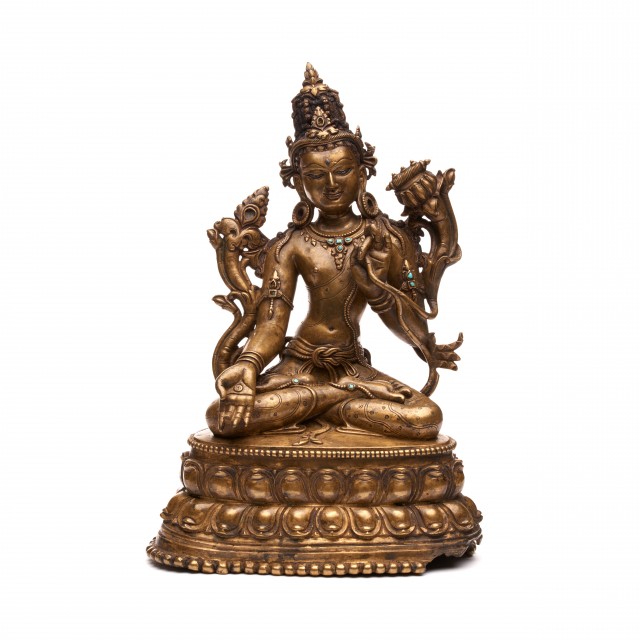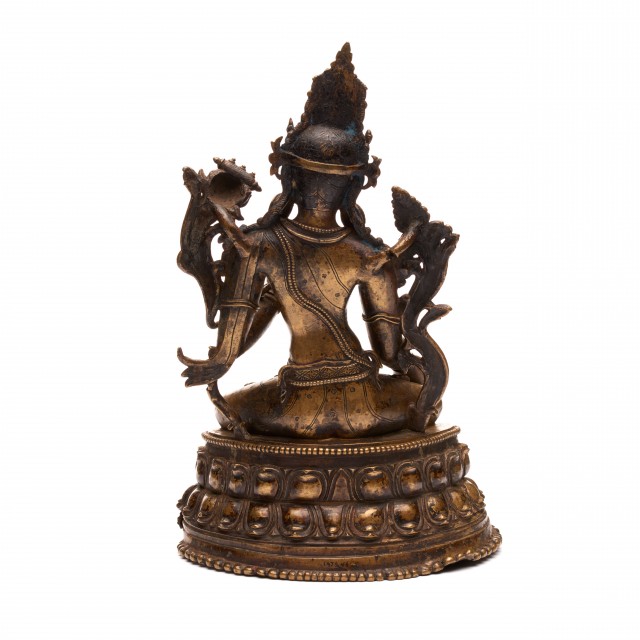
Bodhisattva Manjushri in the form of Sita Manjughosa

Photography by Synthescape, Digital image © Asia Society

Photography by Synthescape, Digital image © Asia Society
Bodhisattva Manjushri in the form of Sita Manjughosa
13th-14th century
Tibet
Copper alloy with inlays of turquoise
H. 12 3/8 x W. 8 3/8 x D. 6 1/8 in. (31.4 x 21.27 x 15.56 cm)
Asia Society, New York: Mr. and Mrs. John D. Rockefeller 3rd Collection, 1979.46
Licensing inquiries
The two traditional attributes of the Bodhisattva Manjushri are objects that symbolize his character: a book which represents Manjushri's role as the embodiment of wisdom, and a sword, which is the weapon with which he cuts through ignorance. This Tibetan image of one form of Manjushri, Sita Manjughosa, however, has no sword, most likely because it was created according to specific texts taught by a Kashmiri monk named Shakya Shri (1127 - 1225), who was active in Tibet in the early 13th century. This form of Manjushri, as taught by Shakya Shri, stresses the role of meditation in attaining transcendental wisdom. The long thin book atop Manjushri's lotus represents a palm-leaf manuscript. Pages from such a manuscript are also in the Asia Society Collection.


